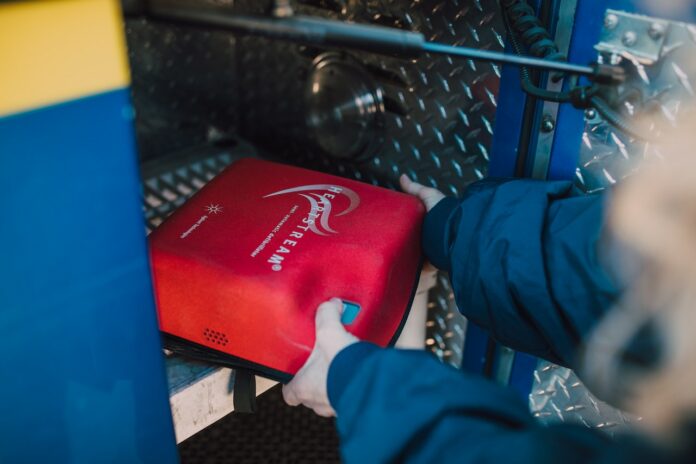And Automatic Defibrillator, commonly known as AED, is a portable device that delivers a shock to the heart of a person experiencing sudden cardiac arrest (SCA). SCA can occur unexpectedly and is responsible for hundreds of thousands of deaths globally each year. So, while Automatic Defibrillators can be lifesaving in these situations, many people question their use, efficacy, and availability. The following points will address some frequently asked questions about AEDs and what you need to know.
What Is an Automatic Defibrillator?
An Automatic Defibrillator is a portable device that delivers an electric shock to the heart in case of sudden cardiac arrest (SCA). It is designed to analyse the heart’s rhythm and determine if a shock is necessary to restore a normal heartbeat. AEDs are user-friendly and can be used by anyone with basic training. They are found in public places like airports, malls, sports arenas, and schools.
How Do AEDs Work?
AEDs analyse the heart’s rhythm and deliver an electric shock if necessary. The device comes with two sticky pads, called electrodes, placed on the chest of the person experiencing SCA. The AED will then analyse the heart’s rhythm and determine if a shock is necessary. If a shock is required, the AED will prompt the user to deliver the shock by pressing a button. The shock delivered by the AED can restore the heart’s normal rhythm and save the person’s life.
Are AEDs Safe to Use?
AEDs design makes it safe and easy to use by anyone. They are equipped with voice prompts and visual aids to guide the user through delivering a shock. AEDs also come with safety features that prevent the user from delivering a shock when not required. For example, the AED will only deliver a shock if the heart’s rhythm requires it. The AED will not deliver a shock if the person is conscious, breathing, or has a normal heart rhythm.
Who Can Use an AED?
Anyone can use an AED, regardless of their training or experience. AEDs are designed to be user-friendly and provide clear instructions through voice prompts and visual aids. However, it is recommended that people receive basic training on how to use an AED before an emergency arises. Basic training can give users the confidence and knowledge to use the device effectively.
Where Can One Find an AED?
AEDs can be found in public places like airports, malls, sports arenas, and schools. They are also commonly found in workplaces, including offices and factories. Many organisations, such as the American Heart Association, have created maps that show the location of AEDs in public spaces. Not all public places have an AED, so knowing where they are located in your area is essential.
Can AEDs Be Used on Children?
Yes, AEDs can be used on children, but using the correct size electrodes for their age and size is essential. Many AEDs come with pediatric pads that are designed for children under eight years old or under 55 pounds. These pads have a reduced shock energy level to minimise the child’s injury risk. If pediatric pads are not available, standard adult pads can be used.
Are AEDs Expensive?
The cost of AEDs can vary depending on the brand and model. However, many AEDs are now more affordable than ever, making them accessible to more people and organisations. Some AEDs can be purchased for less than $1,000, and some organisations may be eligible for grants or financial assistance to purchase AEDs. Additionally, the cost of an AED is minimal compared to the cost of a life lost due to sudden cardiac arrest. Investing in an AED can save lives and should be considered by individuals and organisations.
Do AEDs Require Maintenance?
Yes, AEDs require maintenance to ensure they are ready for use in an emergency. It is recommended that AEDs be checked regularly to ensure the battery is charged and the pads are not expired or damaged. Many AEDs come with self-check features that perform regular diagnostics and alert users of any issues. It is essential to follow the manufacturer’s instructions for maintenance and keep track of when the device needs to be serviced.
Can AEDs Harm Someone?
While AEDs are generally safe, there is a risk of injury if not used properly. For example, the electrodes should never be placed on a person’s chest if they are wet or have medication patches. Additionally, the AED should not be used on someone not experiencing SCA. The device will not deliver a shock unless the heart’s rhythm requires it, but it is essential to follow the device’s prompts carefully to avoid any harm to the person.
Are AEDs Effective?
AEDs are highly effective in restoring a regular heartbeat and saving lives. Studies have shown that using an AED within the first few minutes of SCA can increase the survival rate by up to 70%. AEDs are designed to be user-friendly and quickly deliver a shock, increasing survival chances.
In conclusion, Automatic Defibrillators (AEDs) are portable devices that can shock the heart of a person experiencing sudden cardiac arrest (SCA). AEDs are safe and can be used by anyone with basic training. They can be found in public places, workplaces, and schools. AEDs can be used on children, but using the correct size electrodes for their age and size is vital. AEDs require maintenance to ensure they are ready for use in an emergency and should be checked regularly. AEDs are highly effective in restoring a regular heartbeat and saving lives. Investing in an AED can save lives and should be considered by individuals and organisations.











